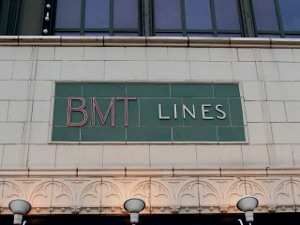
August 19, 2013
BMT–More Than An Old New York City Transit Company
By Michael D. Shaw
New Yorkers of a certain age might remember the BMT, one of the three original transit agencies in the Big Apple, before the city took them all over in the 1940s. Even though the IRT, BMT, and IND lines were no longer official names, these terms were used by riders through at least the 1960s.
In this article and within health care, BMT now stands for Bone Marrow Transplant. Let’s take a look at this procedure…
BMT is a particular therapy, which involves taking cells that are normally found in the bone marrow (stem cells), filtering those cells, and giving them back either to the donor (patient) or to another person. The goal of BMT is to transfuse healthy bone marrow cells into a person after their own unhealthy bone marrow has been treated to kill the abnormal cells. BMT may be used to treat aplastic anemia; sickle cell anemia; various malignant diseases of blood-forming tissues, including leukemia, lymphoma, and multiple myeloma; certain solid cancers such as neuroblastoma; and immune deficiency diseases.
Back in 1956, the first successful human BMT was performed between identical twins–a so-called syngeneic transplant. The recipient was suffering from leukemia. E. Donnall Thomas, the American physician who pioneered this procedure would continue to refine it, and in 1969 used BMT to successfully treat a leukemia patient, whose donor was a relative, but not an identical twin. Thomas and surgeon Joseph E. Murray would receive the 1990 Nobel Prize for Physiology or Medicine for their work on bone marrow transplantation.
Three kinds of BMT are described…
- Autologous BMT–The stem cells are taken from the patient himself, often in advance of high-dose radiation or chemotherapy as a “rescue” therapy post-treatment
- Allogeneic BMT–The stem cells are taken from another person, commonly a relative, although non-related donors can be located via bone marrow registries
- Umbilical cord blood transplant–Stem cells are removed from a newborn baby’s umbilical cord immediately after birth, and are stored. Such cells are immature, making donor/recipient matching less of a challenge.
One highly-respected bone marrow registry is Be The Match®, a unit of The National Marrow Donor Program®. Be The Match is the world’s largest listing of potential marrow donors and donated cord blood units. It is noted that 70 percent of those individuals in search of a BMT do not have a donor in their own family, and depend on this registry to find themselves a life-saving match.
Joining the registry is easy to do. You simply sign up, and then you’ll receive a cheek-swab kit in the mail. The process is painless and free.
Since blood cancer patients are a significant portion of BMT recipients, we should give a plug to Blood Cancer Awareness Month, a promotion organized by The Leukemia & Lymphoma Society (LLS), each September. The campaign is designed to shed light on these diseases and let the public know about all the resources available for blood cancer patients and their families.
Fortunately, the tech industry has gotten behind such worthy causes as Be The Match and Blood Cancer Awareness Month. One example is Shawn Ahdoot of Colocation America, a leading provider of colocation and dedicated servers. As Shawn told me recently:
With a simple cotton swab, people can painlessly begin the process to help save a life. This cause is my chance to aid a fellow human being, which, despite my fear of needles or even the sight of blood, inspires me to undergo scheduled surgery, in which a team of physicians and nurses will extract part of my bone marrow. I am happy to make this sacrifice, since someone else–through the wonders of modern science–is a genetic match for this donation.
Sometimes, it’s easier to save lives than we might think.
